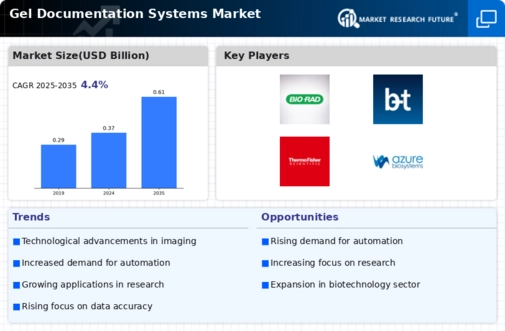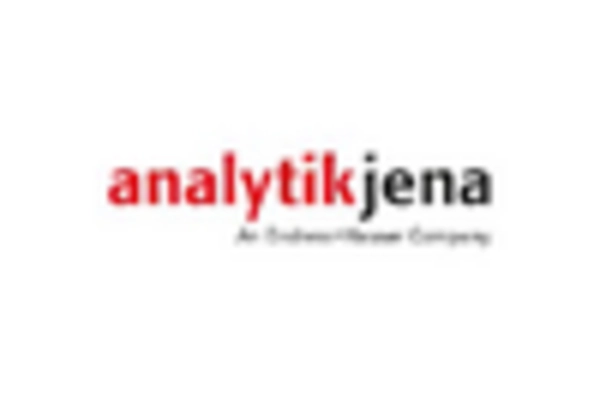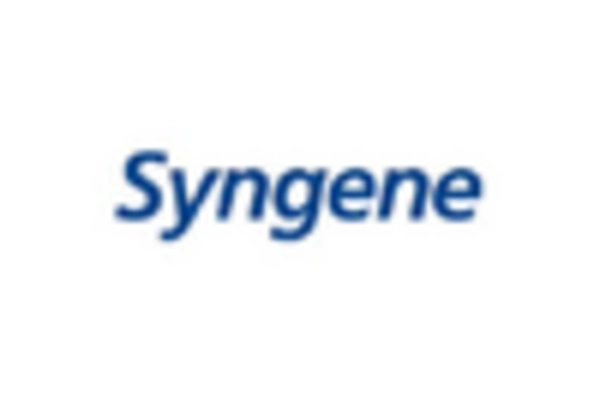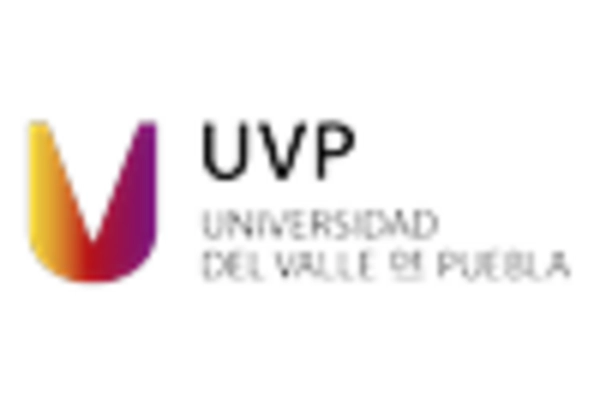Integration of Advanced Imaging Technologies
The Gel Documentation Systems Market is significantly influenced by the integration of advanced imaging technologies. Innovations such as high-resolution cameras and sophisticated software for image analysis are enhancing the functionality of gel documentation systems. These advancements allow for improved visualization and quantification of nucleic acids and proteins, which is essential for accurate experimental results. The market is witnessing a shift towards systems that incorporate features like real-time imaging and automated analysis, which streamline laboratory workflows. As a result, laboratories are increasingly adopting these advanced systems, leading to a projected market growth of around 7% annually. This trend indicates a clear preference for high-performance equipment that can deliver reliable and reproducible results in various research applications.
Expansion of Educational and Training Programs
The Gel Documentation Systems Market is positively impacted by the expansion of educational and training programs in life sciences. As educational institutions enhance their curricula to include more hands-on laboratory training, the demand for gel documentation systems is expected to rise. These systems are essential for teaching students the principles of molecular biology and biochemistry, providing them with practical experience in gel electrophoresis and documentation techniques. The market is projected to grow by approximately 4.5% annually, driven by the increasing number of academic programs and research initiatives that require the use of gel documentation systems. This trend highlights the critical role that these systems play in shaping the next generation of scientists and researchers.
Increased Funding for Research and Development
The Gel Documentation Systems Market is benefiting from increased funding for research and development across various sectors, including academia, pharmaceuticals, and biotechnology. Governments and private organizations are investing significantly in scientific research, which in turn drives the demand for advanced laboratory equipment, including gel documentation systems. This influx of funding is expected to enhance the capabilities of research institutions, allowing them to acquire state-of-the-art gel documentation systems that meet their evolving needs. As a result, the market is anticipated to expand, with a projected growth rate of approximately 5.5% over the next few years. This trend underscores the importance of gel documentation systems in facilitating cutting-edge research and development initiatives.
Rising Demand for Molecular Biology Applications
The Gel Documentation Systems Market is experiencing a notable increase in demand driven by the expanding applications in molecular biology. As research in genetics and genomics continues to evolve, the need for precise and reliable documentation of gel electrophoresis results becomes paramount. The market is projected to grow at a compound annual growth rate of approximately 6.5% over the next five years, reflecting the increasing reliance on these systems in academic and clinical laboratories. This growth is further fueled by the rising number of research initiatives focusing on DNA and RNA analysis, which necessitate high-quality imaging and documentation solutions. Consequently, manufacturers are innovating to enhance the capabilities of gel documentation systems, ensuring they meet the rigorous standards required in molecular biology research.
Growing Emphasis on Quality Control in Laboratories
The Gel Documentation Systems Market is increasingly shaped by the growing emphasis on quality control within laboratories. As regulatory standards become more stringent, laboratories are required to implement robust quality assurance protocols, which include accurate documentation of experimental results. Gel documentation systems play a crucial role in ensuring compliance with these standards by providing reliable imaging and data management solutions. The market is likely to see a rise in demand for systems that offer enhanced features for data integrity and traceability. This shift is expected to contribute to a market growth rate of around 6% annually, as laboratories prioritize investments in equipment that supports their quality control initiatives and enhances overall operational efficiency.

















Leave a Comment